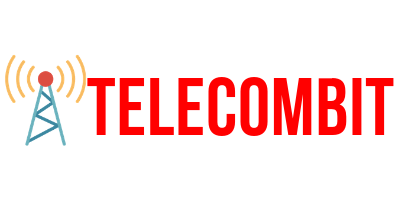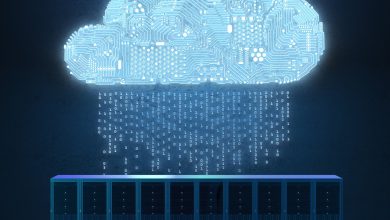Business 101: The Top Challenges of Managing Remote Employees and Their Solutions

Working from home is certainly popular these days, but it also comes with its own set of problems. Business owners and entrepreneurs must ensure that working remotely is as beneficial to their company as it is helpful to their employees.
Working remotely can increase employee productivity. Save your company money on office rent and utilities, and work wonders for employee mental and emotional health.
The only problem, of course, is managing employees all over the country or all over the world. So what are some common business challenges of managing remote employees?
Read on!
Mitigating Risk in Remote Working Environment
One of the primary challenges is ensuring that they maintain high-level security. This is especially true for data and communication.
For remote employment, enterprise systems and vital information is being accessed. This is from virtual private networks and remote endpoints. To reduce risk in the remote working environment, organizations must ensure that there is in-depth encryption of data.
Put in place anti-malware software and regular network and security assessments. Finally, evaluating the success of remote workers is a challenge for managers.
It is essential to have clear reporting and performance metrics to measure success. This is important to ensure remote employees stay on course, so managers can adjust goals accordingly if needed.
Organizations can also leverage automated tools to measure employee performance and progress. This will provide clear and accurate data to evaluate remote employee performance.
Essential Communication Strategies
Managing remote employees has a unique challenge for businesses. Direct face-to-face communication is not an option. To ensure successful collaboration, a variety of essential communication strategies are necessary.
One challenge of managing remote employees is effectively reaching technical staff. This might require specific and detailed training materials. These materials include recordings of live product demonstrations.
To help ensure that these materials remain engaging, buttons and short quizzes can be used. Additionally, clear expectations of remote employee behaviour must be established.
Set rules for availability, communication, and deadlines. Have an acceptable use of technology to ensure everyone is on the same page. Open communication between teams is also key.
Preschedule weekly team and one-on-one meetings to provide updates on progress and offer support. Last but not least, be sure to recognize and reward a job well done. Encourage employees to share their successes.
All of these elements combined will help create an efficient system to manage successful remote teams.
Maintaining Accountability and Productivity
Maintaining accountability and productivity among remote employees can be a difficult task. One major challenge is communication. It is important to have regular check-ins with employees.
Encourage open dialogue. This is to ensure that tasks are being completed on time and according to expectations. Additionally, providing clear instructions and guidelines for tasks to be completed is essential.
This ensures that employees understand exactly what is expected of them. It also ensures how to complete the tasks correctly. Another challenge is ensuring that employees are motivated. Remote employees often lack the motivation that comes with being in a team environment.
It is important to provide incentives and frequent encouragement to keep employees motivated. Finally, addressing issues quickly is critical to maintaining accountability and productivity.
Allowing employees to voice their concerns and work to address the issue is important. This is to prevent any potential disruptions. Establishing an open and communicative environment is also essential. This is to prevent and resolve any issues that may arise.
Managing Distractions and Focus
One of the top challenges is creating an effective system of accountability. This can be difficult when employees are not physically present and observing one another.
This is because it is harder to track what each person is working on and when it’s due. A solution is implementing a workflow tracking system that allows each employee to assign their tasks. They will set deadlines and report progress.
This will allow managers to stay on top of what is being accomplished. This also makes sure everyone is meeting their deadlines. Managers can also provide support by running regular check-ins with their team.
This is to ensure everyone has the resources and guidance they need to remain productive and work on their goals.
Meeting Attendance
Managing remote employees can present a unique set of challenges when it comes to meeting attendance. Remote employees may not have access to the same technology as an in-house team, such as video conferencing. They may not be able to join a meeting at the scheduled time.
Solutions for this could include a small business time clock and sending meeting reminders. It also includes providing remote employees with the necessary equipment or technology. Allowing remote employees to attend meetings flexibly is also essential. This includes recording the meeting for review or attending the meeting through a different device.
If the remote employee does not have access to a reliable network connection, alternative methods should be considered. This includes having a designated facilitator or note-taker participate in the meeting. It also includes providing information to remote employees afterward.
Expectation of Work
Managing remote employees challenges managers to ensure that expectations are clear and consistent. Remote employees need to understand and meet expectations of work in order to stay productive and successful.
This can include tasks and deadlines, communication expectations, feedback methods, and how the employer will continue to assess performance. Solutions to these challenges include the following:
- having detailed job descriptions
- clear task timelines and deadlines
- regular communication options
- documented feedback systems
It is also important to ensure that all expectations are consistent between remote and on-site employees. Providing detailed guidance on the expectations of work will help managers monitor the remote work of their employees. This also includes regular touchpoints with remote employees. It ensures that work is completed satisfactorily.
Resolve the Challenges of Managing Remote Employees Today
There are several challenges of managing remote employees. Through communication, trust, and regular check-ins, companies can promote successful remote working environments for both their employees and their business.
Start by establishing systems for communication. Manage expectations and offer resources for remote employees. You’ll be well on your way to having a successful remote workforce. Try it out – your business will reap the rewards!
Check our blogs for more!




